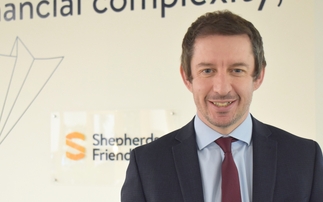Richard Walsh assesses how far we have really come in the fight against HIV.
The recent Unusual Risks research into the insurance needs of HIV-positive people revealed 78% of those surveyed are now aware of HIV life assurance, compared with 20% in the previous year’s survey. This, together with the increased availability of products, is great news.
However, while one might think this increased awareness would be reflected in increased action by HIV-negative people at higher risk of infection to take precautions, this doesn’t seem to be the case.
Recent Lancet and London School of Hygiene and Tropical Medicine reports show many more of London’s men who have sex with men (MSM) are engaging in high-risk practices, including crystal meth use, putting them at risk of infection with HIV, hepatitis C (HCV), and a range of other sexually transmitted infections.
2011 saw a record high 3010 new HIV infections in MSM in the UK, of which 1296 were in London. At the Dean Street Clinic in Soho, 511 new cases of HIV were diagnosed, with most (482) in MSM.
Injection of crystal meth or mephedrone to get a stronger high – known as slamming – is increasing, taking place at sex parties where people often share equipment without sterilising it. While most ‘slammers’ inject the drugs dissolved in water, some are withdrawing their blood with a needle, adding either crystal meth or mephedrone to that blood, and then re-injecting it into themselves or someone else. Users can then be high for days, reinjecting and having unprotected sex with multiple partners.
30% of the users of mephedrone and crystal meth visiting Dean Street in 2011 were injecting these drugs. The following year this increased to 80%. Of these, 70% reported needle sharing. The result is a perfect storm for transmission of both HIV and HCV.
In 2012, meanwhile, the US Food and Drug Administration approved a combination pill of tenofovir and emtricitabine for pre-exposure prophylaxis (PrEP) for HIV. The once-daily drug was approved to reduce the risk of sexually acquired HIV infection in high-risk negative people.
One of the most comprehensive analyses of prescriptions for PrEP in the USA found that of the 1774 people that had used PrEP, 48% were women, and the users were widely spread across the USA.
It seems fairly obvious that this drug will have significant impact for all those at risk of HIV, rather than being confined to MSM. Indeed, given that PrEP will have no impact, of itself, on HCV infection, it might be better to target groups who do not engage in needle sharing. In the UK, this includes some black African heterosexual men and women, who have some of the highest HIV rates.
That said, it is early days in this research. In the UK, the PROUD study pilot is currently recruiting patients. It is designed to assess the effectiveness of PrEP in preventing HIV-infection in high-risk, HIV-negative MSM.
A big worry is that the use of PrEP could see reduced condom use, despite the risk of other STIs. The PROUD trial plans to address this issue by checking whether behaviour in the first 12 months of follow-up differs between those with and without PrEP.
Some will get the drug, others will not get it for 12 months. Change is rarely as straightforward as it appears. What will the HIV and HCV infection rate map look like in a decade?
Richard Walsh is a director and fellow of SAMI Consulting, www.samiconsulting.co.uk











